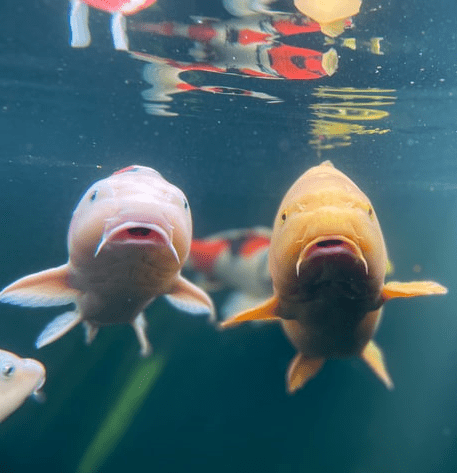 When you’re not aware you’re making a mistake, it’s hard to avoid it.
When you’re not aware you’re making a mistake, it’s hard to avoid it.
So let’s get curious. I’m going to ask you to close your eyes for a minute to imagine a donor you’ve been wanting to ask for a major gift. I’m going to ask you to visualize a space where you’re meeting. Put them in your office, their home, a café or even a Zoom screen. Choose what’s comfortable, and where you think you’d be most likely to meet with this donor within the next month or so.
Okay… do you have your donor and your meeting space in mind? Excellent!
Now, before closing your eyes, commit to visualizing these four things:
- You’re in the room together.
- You smile. They smile back.
- Someone else is in the room with both of you. Imagine you brought them with you. Who are they, and how does it feel having them there to support you?
- Bolstered by the smiles and good company, what do you say to open the conversation?
Okay, are you ready to close your eyes? Even if this feels a little weird, why not give it a try?
EXERCISE: You can do this by yourself, but it works better if you do it in a pair. Find a co-worker, friend or family member to prompt you to close your eyes and take a few deep breaths. Notice if you’re holding tension anywhere in your body. Relax those areas (forehead; neck; shoulders; hands; belly; thighs; calves; feet). Now have them ask you the following questions:
(1) Pick a donor to meet with.
(2) Pick your meeting space.
(3) Pick an additional person to support you in the room (e.g., program director; subject matter expert; volunteer; executive director; board member; other donor). Describe who they are, and how it feels having them there.
(4) Open the conversation. What are you saying to them? What are they saying back? What’s their body language? Are their eyes lighting up? Are they smiling? Leaning forward? Play this scenario out just a bit, until you get to a place of comfort or discomfort.
Then open your eyes.
What did that feel like?
What felt comfortable to you? Uncomfortable? Did it feel more comfortable and pleasant than you may have imagined?
Smiling people, committed to the same cause, hanging out in a comfortable space together…. from such a space can come many good things.
- What did you say to open the conversation?
- How did that feel?
- If it felt good, why?
- If it didn’t feel good, why?
Take a few minutes to journal some answers to those questions. I guarantee this will help you shift the energy for the next time you move into this space – in real time – with a donor.
A Mistake is Just a Misjudgment
It’s not fatal; you can correct it. But first you have to recognize it happened!
Mistakes in major donor conversations generally arise when you don’t know enough about the donor, or vice-versa. That’s why there are two kinds of major donor visits:
Details


 When you’re not aware you’re making a mistake, it’s hard to avoid it.
When you’re not aware you’re making a mistake, it’s hard to avoid it.

 Early in my career I received a piece of fundraising advice that has stuck with me to this day:
Early in my career I received a piece of fundraising advice that has stuck with me to this day: You are known by the company you keep.
You are known by the company you keep.
 Have you ever received confoundingly terrible customer service? Maybe at a restaurant, hotel, fast food restaurant or retail outlet? It happens all the time and, likely, you’ve thought to yourself: “Why on earth are they treating me like this? It’s so stupid! Don’t they realize I’ll never come here again?”
Have you ever received confoundingly terrible customer service? Maybe at a restaurant, hotel, fast food restaurant or retail outlet? It happens all the time and, likely, you’ve thought to yourself: “Why on earth are they treating me like this? It’s so stupid! Don’t they realize I’ll never come here again?”
 Want your donors to sustain you? Then you can’t consume them in five minutes.
Want your donors to sustain you? Then you can’t consume them in five minutes.
 I generally counsel nonprofits to
I generally counsel nonprofits to 
 Today a friend, who serves on the board of a struggling local arts organization, asked me what they can do to increase their fundraising. I asked her a few questions; then answered simply: “Have more conversations with people; make more friends.”
Today a friend, who serves on the board of a struggling local arts organization, asked me what they can do to increase their fundraising. I asked her a few questions; then answered simply: “Have more conversations with people; make more friends.”
 Are you in the right pond?
Are you in the right pond?